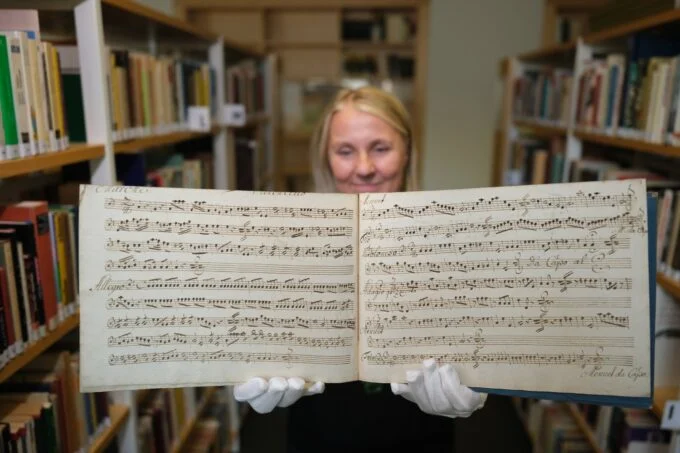A previously unknown piece of music composed by the renowned Austrian composer Wolfgang Amadeus Mozart was recently unearthed by researchers at the Leipzig Municipal Libraries.
The sheet music itself, although not directly scribed by Mozart, was a copy attributed to “Wolfgang Mozart” by the copyist, according to Gizmodo.com.
According to the Stiftung Mozarteum Salzburg, the absence of Mozart’s middle name “Amadeus” in the signature suggests that the piece was composed before 1769, when Mozart started consistently using his full name.
Mozart, celebrated for masterpieces such as The Magic Flute, The Marriage of Figaro, and Requiem, began his musical journey at an extraordinarily young age. By the time he was five years old, he was already composing, and he began performing for European royalty soon after.
His prolific output includes over 600 works spanning symphonies, concertos, operas, chamber music, and choral compositions, making him one of the most influential and enduring figures in classical music.
The newly discovered piece, catalogued in the Köchel-Verzeichnis (the comprehensive catalog of Mozart’s work) as KV 648, is also nicknamed “Ganz kleine Nachtmusik” and “Serenate ex C.” It is a 12-minute-long composition in C major, written for two violins and a bass, comprising seven short movements. Researchers believe that Mozart was between 10 and 13 years old when he composed it, a testament to his remarkable talent at such a young age.
This discovery adds to the body of early works that demonstrate Mozart’s exceptional compositional abilities, even as a child. Known for pieces like Symphony No. 40, which reflects his later mastery of the classical style, this newfound work allows scholars and musicians alike to further appreciate the young prodigy’s development and his impact on the evolution of Western music.
The piece has now been catalogued and will likely contribute to a deeper understanding of the breadth of Mozart’s early work, offering fresh material for performances and scholarly study.

